by Alex Shtaerman
When it comes to New York City subway art, it is no coincidence that although the movement’s legacy has inspired countless graffiti writers and artists around the world while effectively redefining the prevailing paradigm of “modern art”, the actual sequence of events associated with the dawn of NYC’s transit art renaissance remains largely shrouded by a series of checkered narratives, truncated accounts and conflicting threads of hearsay.
In a sense, the institutionalized affirmation of what we consider to be “art” has evolved into a bilateral enterprise similar in nature to two sets of parallel tracks running alongside one another in an IRT subway tunnel. While one track, much like the itinerary of a local passenger train, is retained for conventional depictions, predictable outcomes and the prepared remarks of seasoned scholars; the second track, used far more sparingly, pertains to an altogether different cultural phenomenon; one that identifies itself much more closely with the lightning fast dash of a rush hour express train. Racing by at blinding speeds, the express bypasses most regularly scheduled stops, consequently reducing the majority of would be critics to awestruck onlookers who are left standing at the proverbial station while impending history literally whizzes by them.
Deprived of an opportunity to “climb aboard” and obtain the information required to actualize a worthy account, most will subsequently assume the role of witness bearers as they race against time to produce a meaningful survey of what they deem to be the latest relevant trend. More often than not, these chaotic renditions of “graffiti history” draw on what is readily available as opposed to what is important or definitive in terms of legitimate scholarship. But as the so called historians jockey to position themselves as champions of the brightly colored, lightning fast train that will soon turn from anomaly to legend, one day that train, like all others before it, will reach its destination. Its breaks will screech as the massive steel cars grind to a halt. The doors will slide open and the passengers who actually took the ride will step out onto the platform. And it is precisely at this moment that we can begin to piece together what it was that really took place.
It was drizzling on a Sunday afternoon in Manhattan, but otherwise the weather was mild and plenty of people were up and about. I met up with STAN and PRIZ ONE outside the Union Square station on 14th street. Initially I was worried that we might miss each other but after about ten minutes of waiting under an awning my cell phone rang, STAN and PRIZ were standing a mere twenty feet away. After an unsuccessful attempt to find a few empty seats at the nearby Starbucks we made our way up to the top floor of a Barnes & Noble bookstore and found an empty table. I had prepared some questions which I brought with me. As both STAN and PRIZ had made substantial contributions to the NYC subway art movement during its heyday, I was excited to hear their first person accounts. However, after about five minutes I realized my neatly typed out questions were, for the most part, unnecessary. The conversation flowed naturally as I sat back and thoroughly enjoyed the ride while visualizing the variety of colorful episodes related to me by two veterans of NYC’s famed subway art renaissance. Some glamorize it, some demonize it, but when you hear the actual stories only one thing comes to mind – what fun it must have been!
As part of The Spanish 5ive aka TSF, STAN and PRIZ first gained notoriety on Broadway’s number 1 line during the late ‘70’s and early ‘80’s, painting whole cars, window downs and destroying insides. In 1979 STAN would assume the crew’s presidency and carry on a legacy first established by an earlier generation of renowned writers. Following a lengthy campaign, STAN retired from transit art in 1984. In 2001, after a chance reunion with PRIZ, STAN was inspired to come back out of retirement and reestablish The Spanish 5ive once again. Today the crew is back in full effect, painting walls all over New York City and continuing to do damage. “PRIZ and I are still representing the old guard by staying active”, affirms STAN. “There are many original hardcore subway graffiti crews out there that started to fade out but are now progressively building membership once again. The Spanish 5ive are still alive and kicking; you can’t ignore [the crew’s] graffiti legacy or what the first and second generation did on the IRT Broadway number 1 line”. One thing is definitely true; if you ever want to know what really happened, all you have to do is ask the people responsible for it. As the old saying goes, the truth is always far better than fiction.
Click here to view NYC subway art, walls, productions and more from The Spanish 5ive.
STAN ONE ROLLS THROUGH 125TH STREET IN HARLEM
 RIOTSOUND.COM: Going back to the original first generation era of The Spanish 5ive, how would you characterize the crew’s membership and activities during the ‘70’s?
RIOTSOUND.COM: Going back to the original first generation era of The Spanish 5ive, how would you characterize the crew’s membership and activities during the ‘70’s?
STAN: Well, by the time the mid ‘70’s rolled around, The Spanish 5ive’s first generation crew membership began expanding from the Broadway line into other IRT number line divisions. As the crew gained more and more notoriety, many of the original members got put down into other crews. TMT aka The Magnificent Team, in particular, was an up and coming and prominent crew that many TSF members became integrated into. Shortly after this period the caliber of the transit art masterpieces and productions executed by TSF under TMT became uniquely sophisticated in their detail as well as their use of color – not to mention the sheer size [of the works]. The refinement of the letter style and the added complexities executed during this era were very influential and would subsequently be adopted by the second generation of TSF in the 1980’s.
By the late ‘70’s, the first generation of TSF was no longer active in the subway graff scene. Some of the older members became involved in what at the time was the infancy of rap music. Several members of TSF were actually also part of [pioneering Hip-Hop group] The Fearless Four. Once their music careers had taken off they eventually stopped writing. Several other members turned to crime, were incarcerated, some became deceased while others started families and moved out of the neighborhood.
RIOTSOUND.COM: STAN, you were granted the TSF presidency in 1979 and you are largely credited with revitalizing the crew and ushering in a new era of TSF that would last well into the ‘80’s. What were the circumstances that led up to you assuming The Spanish 5ive presidency and what ensuing steps did you take in bringing the crew back to prominence?
STAN: I was tagging STAN ONE all over my neighborhood and I caught the attention of TSF elders LEO and RATE [125]. Unknowingly I started tagging on their building’s rooftop. [Once they noticed my tags] I began receiving jeers and criticism in response to my hand style in written messages on the walls. Soon I was going to that specific roof just to read what they would write to me. LEO and RATE would leave me helpful messages on how to execute a proper “S”, then a “T” and so on. I took their constructive criticism and improved my tagging style. Then one summer on the block I was introduced to them by mutual acquaintances. In time they befriended and mentored me. Soon after that I began to realize that they were not really getting up or pushing the crew any longer as they had in the past. So one day I got up the courage to request the crew’s leadership. After they both [LEO and RATE] gave me a short synopsis [on how I should represent TSF], the title of president of The Spanish 5ive was bestowed upon me.
As TSF flourished in subway stations and on walls, more and more people wanted to be part of it. So I put down skilled, driven and no nonsense individuals; membership on Broadway escalated steadily. These same guys could go down into those tracks alone, paint and slug it out if necessary. It just took a phone call and we were always there for one another. We painted, went clubbing, racked [paint], hung out, got drunk and slept and ate over each other’s homes. Several of us, like DONE, PRIZ and CHAZ, attended the same schools together. Even though I was the prez of the crew, it was a democracy. My first partner and vice prez of TSF was DE aka DONE ONE.
RIOTSOUND.COM: Unlike today, in the early ‘80’s the graff scene in NYC was almost exclusively about hitting trains, and at the same time you had a vast variety of crews and writers who were all aggressively competing for space within one enormous transit system. What kind of dynamic did that create?
STAN: In those days all the IRT and IND / BMT yards and layups became a crew’s or a writer’s territory. We were not the only ones that enforced that; in the 1 tunnel, if you had war with one of us, you had war with all of us. If you ventured down there uninvited you were not leaving with your paint, jacket, sneakers or camera intact, nor was your work going to be visible come Monday morning.
PRIZ: Positive things did come out of some bad blood, mainly the beauty of competitiveness and creativity under pressure. At that time we were also monitoring and keeping the number of toy writers’ activities to a minimum. This kept the Vandal Squad from harassing or raiding us as often as they would have otherwise. It was kind of like controlling and keeping the deer population in check. But things definitely could get very serious at times. One time they [the crew] even rolled up on me not realizing who I was [laughing]…
I remember it was a Saturday morning and I was headed downtown to see my girlfriend. I was dressed in my Lees and clean black Puma suede sneakers. I decided to take a detour and head way uptown to the 1 tunnel to see if any of the crew was hanging out. When I got to the end of the station I hung off the side of the signal light and looked into the downtown track where I could see two parked sets of humming trains. I could smell the distinctive odor of old Krylon still lingering in the air, so I knew someone was down there. Finally, when I couldn’t see anyone or anything, I walked to the middle of the station to wait for the next downtown train.
Then out of the corner of my eye I see a group of darkly dressed individuals climbing up the ladder at the end of the station platform heading in my direction. STAN was in the lead. The Spanish 5ive were on the prowl! He didn’t recognize me until he got much closer. ”What’s up PRIZ?” he said. I said “What up STAN?” and gave him a pound. I noticed everyone finally relaxing. I got nods from the fellas, the tension was gone. Finally STAN said “you hanging out or coming down to paint?” “Nah”, I said, “I’m not getting my clean threads all full of soot and my suedes scuffed up”. He then smiled, gave me a pound and said “later”. The fellas smiled, nodded and then STAN and the crew exited the station the same way they had entered.
STAN: And I always laugh about that one, because several nameless individuals were greeted the same way but with a different outcome [laughing]…
“I have nothing against someone educationally
bettering themselves but graffiti writing in all
its levels and degrees was something that was
self taught. Or, if you were lucky, you were
mentored by someone in the ‘criminal arts’”
RIOTSOUND.COM: When it came to getting over on a day to day basis, were there any typical tactics you’d employ to stay one step ahead of the TA?
PRIZ: There was definitely a lot of productive activity going on in the transit system in those days. Though I’m sure the Transit Authority would disagree with that [laughs]. Typically when I was in a layup, before I even put my paint down, I always looked for an escape route in case we got raided. I would also check the emergency exits and their hatches just to make sure I had an alternate way out if things got too hot.
Any [inside] information was also always useful. I remember one time I was waiting for the train and I ran into one of my classmates who was doing community service for hopping turnstiles. His service hours were spent cleaning, scrubbing and buffing the insides of a set of RR ridgie trains [Editor’s note: a ridgie was a type of subway car that featured corrugated, stainless steel sides]. He gave me the 411 on where those cars were being stored that weekend. Info like that definitely helped me in getting to the newly cleaned trains before the next man.
STAN: A lot of times I would go down into a tunnel right after a train had just been laid up and wait patiently for the conductor to walk from out of the sets and onto the [station] platform. Then I’d climb in the train and get creative.
RIOTSOUND.COM: It’s obviously no secret that every borough in New York City is known for having its own particular flavor, swagger as well as unique idiosyncrasies. Uptown, in particular, has always had a flair about it that’s long been a part of Manhattan’s distinct cultural legacy. When it comes to graff, what do you feel were some of the key styles that emerged out of Manhattan?
PRIZ: I always felt that Broadway style’s uniqueness was in the flow of exterior letter masterpieces and the diverse sharp designs and color combinations. Then you had the different writers’ checkerboard bubble clouds that [along with being visually innovative] would also block out the buffed ghost images or the cross outs underneath. The interior stinging-neat hand styles and colored inks that were used were the best I’d seen on any number or letter lines. [As far as writing goes], I always considered Manhattan to have much “Mad-hattan” styles from the mid ‘70’s to the mid ‘80’s.
STAN: There were many unique styles and crews; TMT [The Magnificent Team], FBA [Fast Breaking Artists], CYA [Crazy Young Artists], RTW [Rolling Thunder Writers], BYB [Bad Yard Boys], TC5 [The Cool Five]…
RIOTSOUND.COM: Most of us who follow graff would probably agree that over the last decade there’s been a progressive shift away from distinct letter styles along with a growing emphasis on elaborate backgrounds, characters and other complimentary elements. In your view, what kind of effect have those trends had on writing?
PRIZ: Today and globally I see the letters getting smaller and the background and characters overpowering the productions. It’s a big difference from when the letters dominated the subway cars and the characters and backgrounds were secondary. The graffiti artist now [wants to be more of a traditional] artist.
STAN: On the other hand, I’ve seen some artists paint their letters bigger while the background is secondary. [Often] you can’t read the piece because the letters now don’t look like letters anymore. An “S” will look like a “W”; a lot of the lettering [is practically illegible].
PRIZ: I don’t understand how a so called graffiti artist can do a wild style piece and not learn to do a simple or semi wild? Some individuals haven’t even mastered the hand style of their tag yet. There is great work out there; however, I don’t consider all art graffiti and all graffiti art. For example, [back when I was coming up], I remember drawing this detailed goggle character along with a SWAN piece in my blackbook. I showed it to a veteran writer and he winced at it. His explanation was that my piece had been outshined by my character, there was no balance there. The letters had to be as detailed if not better then the character or at least complement one another. The letters always came first. I wasn’t complemented for the character like today’s young blood’s detailed renderings. I wouldn’t have been acknowledged as a writer if my characters were better then my pieces.
RIOTSOUND.COM: When we look at the general state of graffiti today, it’s obviously something that has become deeply intertwined with big business. The aerosol art aesthetic has come to dominate everything from art galleries and museums to product design and advertising campaigns. With that kind of money and notoriety at stake, the type of people that tend to gravitate towards the culture in 2009 are vastly different from the pedigree of writers that pioneered the NYC transit art movement. What would you say are some of the most prevalent difference between writers then and now?
PRIZ: Back in the days, when you asked a writer “whatchuwrite?” he didn’t hesitate to tell you. Today they need a mouthpiece to answer you. A lot of kids I grew up around were boxers, gang members, came from broken homes or were impoverished. They didn’t have much schooling or even a GED, nor did they know what the abbreviation stood for. I have nothing against someone educationally bettering themselves but graffiti writing in all its levels and degrees was something that was self taught. Or, if you were lucky, you were mentored by someone in the “criminal arts”. I read somewhere that today there are a lot of graffiti artists with masters degrees in art. I also read that there are universities that offer graffiti courses. I graduated from the school of trains class of 1983 – whether you heard of me or not – not Subway Art 101 beginners course of 1990. By the time I received my degree and later my masters in art I was already self taught in graffiti without ever having had any formal art school training.
The new blood today considers themselves “artists”. Some also think that the term “old school” applies to writers from the 1990’s. As writers from back in the days, we had an intensity and an edge in our work and we carried ourselves in a way that isn’t present among the writers of today. Back then we didn’t worry much about the TP [Transit Police], we were too busy watching out for one another, rival crews, clean trains and the buff. When you speak to some of the dedicated old timers [that are still around] today, you can hear it in the tone of their voice.
“I’m sure like in the early ‘70’s, the Vandal Squad
was behind the cross out wars going on during that
time, maintaining their anonymity while building
animosity between rival writers and their crews. I
saw VS – an abbreviation of Vandal Squad – in
yellow and then gray bucket paint used to roll
over several whole cars including one of mine”
RIOTSOUND.COM: Looking back at how graffiti culture has been chronicled from a historical perspective, it’s definitely something that’s been very sporadic and inconsistent. It’s a well known fact that many books, for example, tend to focus on a handful of crews or writers while sometimes inadvertently, or for reasons unclear, overlooking others. For the record, what was the full extent of The Spanish 5ive’s contribution? For people who weren’t there to see it but want to have their facts 100% straight, what would you say?
PRIZ: It could have been whole cars or tags, or the way we rolled into a yard or a tunnel as a crew or individually. I think among all that subway crime and “vandalism” that the straphangers and the MTA complained about and deemed out of control, the many crews and writers that were consistent and had a powerful painting presence know who they are and what they accomplished.
The Spanish 5ive planted their flag among the many “top” crews that existed on the 7th Avenue Broadway number 1 line. Some of the members’ letter styles were handed down and adopted, transforming into [that] individual’s unique finger print. Some members were dangerous as well as competitive with their hand styles. It was a raw and high pressured environment.
STAN: I know we set styles and influenced many writers along Broadway. I’m just proud of what was accomplished by a crew that almost met its demise [in the late ‘70’s]. Today certain individuals who are rewriting graffiti “his-story” were not as legendary as they [now] appear to be when it came to a one on one basis. I enjoy the fact that several of them fast forwarded from one era into another without ever acknowledging The Spanish 5ive crew before we vacated the 1’s. However, during the course of our occupancy there, many ran in the opposite direction when they spotted us. I acknowledge and respect all those “real writers” who didn’t tell tales and stood their ground, whether I or my crew had beef with you or not.
Speaking of invented stories and exaggerations, I read an interview on a well known graffiti site where a certain writer who used to get chased out of the 1 tunnels on a constant basis by CHAZ claimed that he had once waited for CHAZ outside his school and when CHAZ came out he smacked him up for about a half hour straight and then let him go. I recently called PRIZ and then DONE, who were also classmates of CHAZ, and neither one of them ever recalled this ever happening. I think I would have heard about it or actually seen it happen. I used to wait for CHAZ, PRIZ and DONE outside their school every day and hang out. I’m definitely sure if I wasn’t there that particular day, CHAZ would have talked about that half hour slap fest. School teachers, classmates, security guards and his girlfriend would have also been witnesses to this if it had taken place outside the school [laughing]. This is a perfect example of stories that have no merit told by the same individuals who later came into the 1 tunnels when TSF had already disbanded; because before that they wouldn’t have been able [to step foot in there].
Loosely used titles such as “legends”, “kings” and “all-city” are applied today to certain individuals in books and videos who didn’t do as much as they claim they did. I have met people who call me a king or a legend and I just shake my head “no”. And although I did do damage, I have to give a nod of recognition to the real 24-7 writers that really deserve and earned those titles. There are well over a hundred unmentioned writers that didn’t receive any recognition because they weren’t in the right place at the right time.
PRIZ: For me, I’m happy I did do a little something on the trains during the NYC subway graffiti heyday when people came from other countries just to see and photograph our NYC trains. I was also proud to be part of TSF as a teen. I don’t need STAN to speak on my behalf, though he was there, or anyone else, my work speaks for itself.
 RIOTSOUND.COM: PRIZ, you had initially retired around the same time that TSF effectively disbanded in 1984; however, some time later you attempted to make a comeback during a time that is largely associated with the decline and subsequent demise of subway graff in NYC. What was that experience like, writing during what is now regarded as a very bleak era for transit art in New York?
RIOTSOUND.COM: PRIZ, you had initially retired around the same time that TSF effectively disbanded in 1984; however, some time later you attempted to make a comeback during a time that is largely associated with the decline and subsequent demise of subway graff in NYC. What was that experience like, writing during what is now regarded as a very bleak era for transit art in New York?
PRIZ: By 1985 I had put down my cans; unfortunately I got older and had other interests. Then in late ‘86 I became inspired again by a retired vet’s writer tales. I remember standing on the 96th street station across from the 1, 2 and 3 line. Looking at the trains I realized the scene had completely changed. Everyone I knew had moved out of New York and the younger writers that were now painting had egos and stories as lengthy as the 59th street station. The interiors of the white elephants that were running on Broadway were completely saturated with black, silver and white ink and spray paint. There was a large amount of writers competing for the little amount of space available. They would go over and background over each other, which led to a lot of wars. You had to search hard to find any late ‘70’s or early ‘80’s classic tags; you had to look up in the ceilings, conductor booths, behind the advertisement signs, over the doors, headboards or behind the train maps. Amongst all that chaos you had individuals who were spray painting silver Krylon over the headboard tags that were there already so they could tag their own name on [the headboard]. That was a great way to ruin a mop or a pilot.
The cats who were still carrying the torch were a minority of 25%. The toy taggers who were literally swarming the subway car interiors and exteriors were 75% stronger. I would see window down pieces on exteriors that had tags bleeding right through the paint job. A high rate of whole cars were crossed out. It became a free for all, and then the buff was implemented on top of that, reducing the train exteriors to flat white streaks. The toy quality of hand styles was running pretty rampid. There was very little quality as far as hand styles that were unique.
I’m sure like in the early ‘70’s, the Vandal Squad was behind the cross out wars going on during that time, maintaining their anonymity while building animosity between rival writers and their crews. I saw VS – an abbreviation of Vandal Squad – in yellow and then gray bucket paint used to roll over several whole cars including one of mine. They divided, conquered and then arrested the stragglers and made use of the snitches to apprehend the stylers. The incredible whole cars that rolled like the CASE EL KAY by CASE and the Style Wars [car] by NOC [167] that ran for years on different IRT lines were now tagged and ragged. The same individuals who couldn’t and wouldn’t step foot into the 1 tunnels when The Spanish 5ive held court were now claiming it as their own. The TSF members that were still around had either started their own crews or joined other more active ones. The whole cars by STAN and other members were now non existent. There was even some toy writing STAN 2.
The individuals I was introduced to at that time had little to no knowledge of the pioneers, trailblazers, kings and legends of the late ‘70’s and early ‘80’s. However, they all knew about the documentary Style Wars and could recite lines from it like it was Shakespeare. The only writers that “existed” or were of importance to them were the ones featured in the book Subway Art. I would sit there quietly and listen to their jargon while these individuals bantered about their skills, ups and giving beat downs. They were overbearing, wannabe outlaw braggarts and name droppers. These were the same individuals that when arrested would be the first to snitch out their whole crew and the next man after that. They were also the first to have their Adidas robbed while being detained in an NYPD holding cell.
I knew another retirement for me was looming when I ran into a toy who was once a high school classmate of mine. Back then I had taken pity on him because he was bullied, smacked up, always getting vicked and in trouble with teachers on a constant basis. He was also a regular in detention. This individual would follow me and CHAZ and other TSF members around like an attention starved puppy. I gave him outlines and did pieces in his blackbook. The years had passed and he was now a self proclaimed master of Broadway. All he had running on the line was several same styled silver pieces and throwups. He showed me some photos of his work and then suggested that we go to the 1 tunnels and paint a multicolor whole car together. I said “sure, I’ll set a day, place and time”. He agreed under the conditions that I go ahead first and meet him down there. Initially I smelled a setup, but what he was actually doing was trying to impress me by making a grand entrance among his crew and any other writers that were present.
This generic toy also had the audacity to tell me that while I waited for him, if any of his boys or any other writers approached me, all I would have to do is tell them that I was painting with him and that doing this would guarantee my safety [laughs]. If I had considered being brought up on assault charges or going to jail, I would have physically ended this bitch’s short graff career right there just for disrespecting me like that. So I declined [to paint with him] and told him to go fuck himself and his whole crew. Eventually I made a successful comeback in 1992 and I’ve continued coming back consistently ever since.
“I didn’t consider Keith Haring (RIP) a graffiti writer
nor was he out there doing pieces and bombing
trains. The mass media gave him the title, we didn’t.
The media and the art world definitely categorized
individuals and what they did when the cameras came
on. The media, society and the art world critics don’t
take the time to understand graffiti completely”
RIOTSOUND.COM: PRIZ, you’re also responsible for bringing STAN back out of retirement; how did that happen?
PRIZ: In 2001 STAN came into the company I worked for to interview for a position and it so happened that at the time I was the one who conducted the interviews. STAN had been retired from graffiti since 1984 and most of the TSF second generation members had lost contact with one another. I hadn’t heard from nor seen STAN since the summer of ‘84 when a group of us were all hanging out at Riverside Park. While I was interviewing him I took down his ID information and I immediately recognized his last name. When I asked him if he had ever lived at 125th street and if he ever went by the tag name of STAN ONE, he hesitated, suspiciously looked at me and then said yes.
A few days later we had lunch together and I brought my bombed blackbook in which he and other TSF members had done pieces. What a nostalgic flashback that was! We reminisced about certain individuals and what they had done back then and what they were doing today. Within a month of consistent practicing, sketching outlines and racking paint together, we started bombing trains, getting raided and painting illegals. Then finally we started doing commissioned walls. We now paint every weekend on anything that will hold paint just like old times.
RIOTSOUND.COM: STAN, now that TSF is back in full effect, you have reassumed the crew’s presidency; PRIZ is the current vice president. As of now, who else in the crew actively paints, and also, what are some of the non-active members, first and second generation, presently up to?
STAN: As of now it’s me, PRIZ, SON ONE, DE aka DONE and MATCH 2. DONE doesn’t really paint anymore, he’s a family man but he has been known to show up unexpectedly. SON was doing Hip-Hop graffiti [styled] jewelry for a company. I heard that Oscar [RATE 125] is now a music producer with his own record label. I just recently saw pictures of PESO, TEEN [125] and FED 2 painting canvases and legal walls uptown. MATCH 2 works for the city. PRIZ and I are in constant contact. Other members who are fully down don’t always put our crew up or aren’t really writing anymore. PRIZ and I are still representing the old guard by staying active. There are many original hardcore subway graffiti crews out there that started to fade out but are now progressively building membership once again. The Spanish 5ive are still alive and kicking; you can’t ignore [the crew’s] graffiti legacy or what the first and second generation did on the IRT Broadway number 1 line.
RIOTSOUND.COM: As far as the future goes, what’s in the works for TSF?
STAN: We are painting with the “old-timers” and doing canvases for an upcoming show – details on that are pending – also blackbook projects and book interviews. Hopefully in the near future we will write a book and set some things straight once and for all. In the meantime, PRIZ and I are still painting and painting and painting…
RIOTSOUND.COM: Getting back to some the evolving elements in today’s street art scene, I wanted to get your take on artists such as Shepard Fairey, who is arguably the most famous street artist in the world right now, due in large part to his now iconic rendering of President Obama, which has been enshrined in the Smithsonian National Portrait Gallery. Of course while Fairey’s work does have merit, he’s been designated a “graffiti artist” when he’s mostly a stencil guy – the media makes no distinction. In general, what do you make of the new generation of stencil, sticker and wheat pasting artists who in many cases have moved to the forefront of street art as the genre continues to expand? Some of these guys, and girls, draw things at their homes or studios and then bring the drawings outside and glue them on walls, and then people call them “graffiti artists”. Isn’t there something odd about that?
PRIZ: I didn’t consider Keith Haring (RIP) a graffiti writer nor was he out there doing pieces and bombing trains. The mass media gave him the title, we didn’t. The media and the art world definitely categorized individuals and what they did when the cameras came on. The media, society and the art world critics don’t take the time to understand graffiti completely. They criticize and place a name, title and label on everything.
I honestly don’t consider wheat pasting or stenciling graffiti writing, that’s just my opinion. I wasn’t crazy about the “hello my name is” stickers but I did put a few up in the past. Maybe this evolved into the wheat pasting and the stenciling of today? I can’t identify or put the same individual who paints a subway car with a 20 can risk in the same artistic arena as the individual who glues paper to a wall. I guess I’m biased. They’re stretching the limits of creativity but that creativity is not graffiti writing. It’s a great way to be seen but it’s not for me. Doing wheat isn’t doing trains.
STAN: Amen.
RIOTSOUND.COM: In reflecting on the time when you first started writing and then fast forwarding through the whirlwind rise of graffiti into a global culture that flourishes on every continent in the world besides Antarctica, how do you put things in perspective?
STAN: I was a teenager when I started writing; we hung out and benched at 125th street. That station was only a few blocks away from my apartment. By my late teens I developed good can control and the motivation to bomb everything. Back then it was all about having fun, getting out there and painting a train and seeing your name roll by.
I never thought [graffiti] would expand to the heights it has today. I think it’s great and that it’s become a common global bond that links artistic and creative individuals everywhere. I’m still painting while keeping the “old school” graffiti alive. The trains aren’t what they used to be but I’ll always have the urge to pick up a can and jump into the tracks.
PRIZ: I was in my teens [when I first started]. When I turned twenty I could finally throw down with a can of paint as well as paint my name on a larger scale from a blackbook sketch. In those days it was blackbook exchanges, joint paint ventures and detention drawing sessions. Back then it was an electrifyingly simpler, younger time for me as a teen living on the upper west side of Manhattan. The graffiti writing, music and fashion of the early ‘80’s were all creatively colorful and visually groundbreaking. I rode the train to and from school and occasionally benched trains to check out freshly painted whole cars and hear the latest writers’ gossip. In one afternoon sitting I could tell you who was a toy, who was up and coming, who had beef, war, skills and lastly, who was king of the line on the interior as well as the exterior of those subway cars.
[At the end of the day] it’s all about getting up whether you reside in New York or Copenhagen. I’m still here doing what I enjoy doing in the midst of all this style evolution and hi-tech wild styles. I’m not intimidated nor do feel I that I have to stay in the same comfortable place without evolving. I can bend and reshape with the times but I will not paint nor duplicate anyone else’s style to be accepted. I’ll always scope out trains when they roll into a station. It’s a writer’s nature. The MTA – Money Taking Authority – prefers to give fish housing [Editor’s note: PRIZ is referring to the dumping of vintage subway cars into the Atlantic Ocean for the purpose of creating artificial reefs], so why complain? I’m still a writer and I’m still writing, ‘nuff said.
RIOTSOUND.COM: Do you have any final word for all the fans reading this?
TAN: Many thanks to Alex from RiotSound who had the patience and the determination to get this interview literally right on track as well as out there to share with the world.









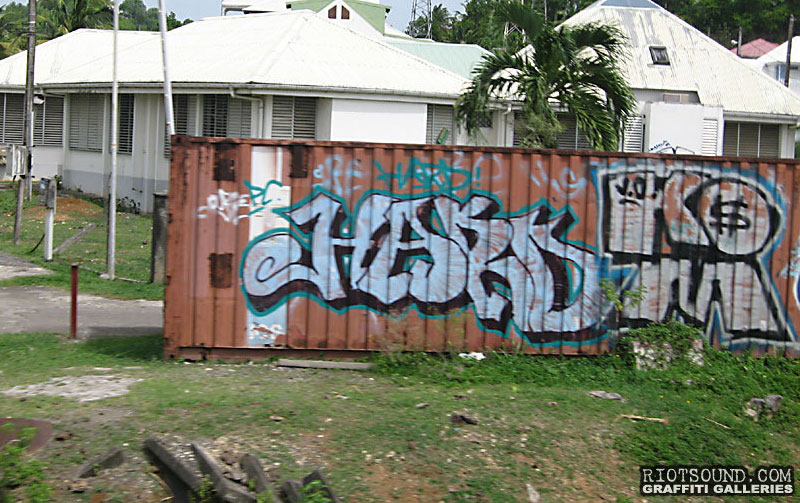
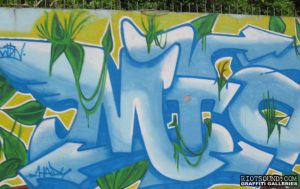
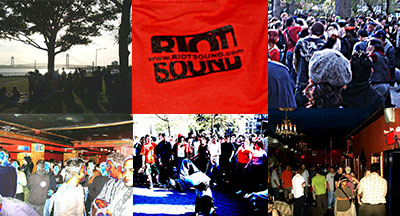

















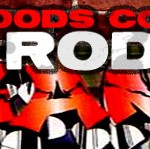
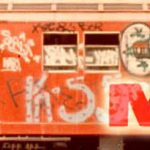




Comments